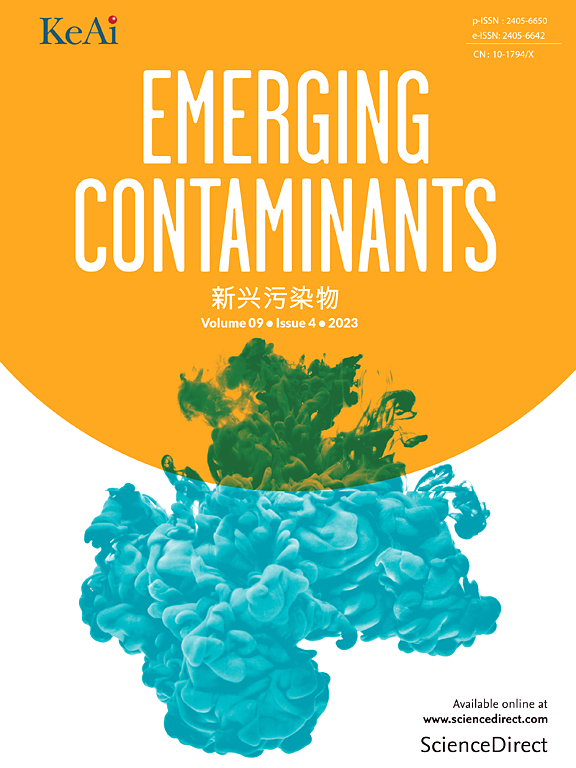Microplastics in food products: Prevalence, artificial intelligence based detection, and potential health impacts on humans
IF 6.9
2区 环境科学与生态学
Q1 ENVIRONMENTAL SCIENCES
引用次数: 0
Abstract
Microplastic contamination in food products has become a growing concern due to its potential implications for human health, the environment, and food safety. Over the past decade, microplastics have been detected in a wide variety of food items, including seafood, salt, processed foods, and beverages. This review provides a comprehensive description of the sources, detection methods, and health risks associated with microplastics in food. The contamination pathways, including inhalation, and dermal contact, are discussed, with a focus on the most common exposure route—ingestion through contaminated food and water. Among the health hazards that microplastics present include oxidative stress, immune system disturbance, neurotoxicity, reproductive toxicity, and possible carcinogenic consequences. Concerns about nanoplastics' toxicity are heightened by their capacity to cross biological barriers and build up in tissues. The research also highlights the necessity of better detection methods, like multispectral imaging and AI-based algorithms, to increase the precision and effectiveness of microplastic identification in food. It also talks about how crucial it is to comprehend the origins and routes of contamination in order to lessen the impact of microplastics in the food supply chain. Critical future research directions are outlined including the creation of regulatory frameworks to restrict exposure to microplastics, standardized detection techniques, and longitudinal human health studies. The evaluation also highlights the need for comprehensive measures to combat microplastic contamination in food by promoting public awareness campaigns and the creation of sustainable alternatives to plastic packaging.
食品中的微塑料:流行程度、基于人工智能的检测以及对人类的潜在健康影响
食品中的微塑料污染由于其对人类健康、环境和食品安全的潜在影响而日益受到关注。在过去的十年里,在各种各样的食品中都检测到微塑料,包括海鲜、盐、加工食品和饮料。本文综述了食品中微塑料的来源、检测方法和健康风险。讨论了包括吸入和皮肤接触在内的污染途径,重点讨论了最常见的暴露途径-通过受污染的食物和水摄入。微塑料存在的健康危害包括氧化应激、免疫系统紊乱、神经毒性、生殖毒性以及可能的致癌后果。由于纳米塑料能够跨越生物屏障并在组织中积累,人们对其毒性的担忧日益加剧。该研究还强调了更好的检测方法的必要性,如多光谱成像和基于人工智能的算法,以提高食品中微塑料识别的精度和有效性。报告还谈到,为了减少微塑料在食品供应链中的影响,了解污染的来源和途径是多么重要。概述了未来的关键研究方向,包括建立限制接触微塑料的监管框架、标准化检测技术和纵向人类健康研究。评估还强调需要采取综合措施,通过促进公众认识运动和创造塑料包装的可持续替代品,打击食品中的微塑料污染。
本文章由计算机程序翻译,如有差异,请以英文原文为准。
求助全文
约1分钟内获得全文
求助全文
来源期刊

Emerging Contaminants
Medicine-Public Health, Environmental and Occupational Health
CiteScore
10.00
自引率
6.70%
发文量
35
审稿时长
44 days
期刊介绍:
Emerging Contaminants is an outlet for world-leading research addressing problems associated with environmental contamination caused by emerging contaminants and their solutions. Emerging contaminants are defined as chemicals that are not currently (or have been only recently) regulated and about which there exist concerns regarding their impact on human or ecological health. Examples of emerging contaminants include disinfection by-products, pharmaceutical and personal care products, persistent organic chemicals, and mercury etc. as well as their degradation products. We encourage papers addressing science that facilitates greater understanding of the nature, extent, and impacts of the presence of emerging contaminants in the environment; technology that exploits original principles to reduce and control their environmental presence; as well as the development, implementation and efficacy of national and international policies to protect human health and the environment from emerging contaminants.
 求助内容:
求助内容: 应助结果提醒方式:
应助结果提醒方式:


